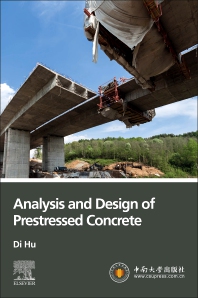Books in Built environment
Books in Built environment
Built Environment coverage includes comprehensive titles on all the major research and technological developments in civil and structural engineering, construction materials, and a variety of related fields (environmental engineering, transportation engineering, urban planning, etc.) that contribute to make design, construction, maintenance, and operations of buildings, cities, and infrastructure smarter, more efficient, sustainable, and resilient.
- 1st Edition
- July 22, 2022
- Elliot J. Gindis + 1 more
- English
- Paperback9 7 8 0 3 2 3 9 9 6 6 5 5
- eBook9 7 8 0 3 2 3 9 5 0 9 9 2

Up and Running with AutoCAD 2023
- 1st Edition
- April 17, 2022
- Di Hu
- English
- Paperback9 7 8 0 1 2 8 2 4 4 2 5 8
- eBook9 7 8 0 3 2 3 8 5 9 9 8 1

Analysis and Design of Prestressed Concrete
- 1st Edition
- April 16, 2022
- Yufei Wu
- English
- Paperback9 7 8 0 1 2 8 2 1 1 6 4 9
- eBook9 7 8 0 1 2 8 2 3 2 0 1 9

Analytical Approaches for Reinforced Concrete
- 1st Edition
- March 17, 2022
- Shahryar Habibi
- English
- Paperback9 7 8 0 1 2 8 2 2 1 2 9 7
- eBook9 7 8 0 1 2 8 2 2 1 6 4 8

Building Automation and Digital Technologies
- 1st Edition
- February 18, 2022
- Bo Yang + 3 more
- English
- Paperback9 7 8 0 1 2 8 2 2 2 6 7 6
- eBook9 7 8 0 1 2 8 2 2 2 6 8 3

Behaviour of Building Structures Subjected to Progressive Collapse
- 1st Edition
- December 5, 2021
- Eugenia Gasparri + 5 more
- English
- Paperback9 7 8 0 1 2 8 2 2 4 7 7 9
- eBook9 7 8 0 1 2 8 2 2 4 9 1 5

Rethinking Building Skins
- 1st Edition
- December 2, 2021
- Mohamed Elchalakani + 2 more
- English
- Paperback9 7 8 0 3 2 3 8 5 5 9 6 9
- eBook9 7 8 0 3 2 3 9 0 3 6 0 8

Single Skin and Double Skin Concrete Filled Tubular Structures
- 1st Edition
- August 8, 2021
- Shuying Wang + 3 more
- English
- Paperback9 7 8 0 1 2 8 2 3 9 9 2 6
- eBook9 7 8 0 1 2 8 2 4 2 4 5 2

Shield Tunnel Engineering
- 1st Edition
- August 4, 2021
- J.Y. Richard Liew + 2 more
- English
- Paperback9 7 8 0 1 2 8 2 3 3 9 6 2
- eBook9 7 8 0 1 2 8 2 3 4 3 6 5

Design of Steel-Concrete Composite Structures Using High-Strength Materials
- 1st Edition
- August 4, 2021
- Ibrahim Dincer + 1 more
- English
- Paperback9 7 8 0 1 2 8 2 3 5 7 2 0
- eBook9 7 8 0 1 2 8 2 3 6 2 6 0
